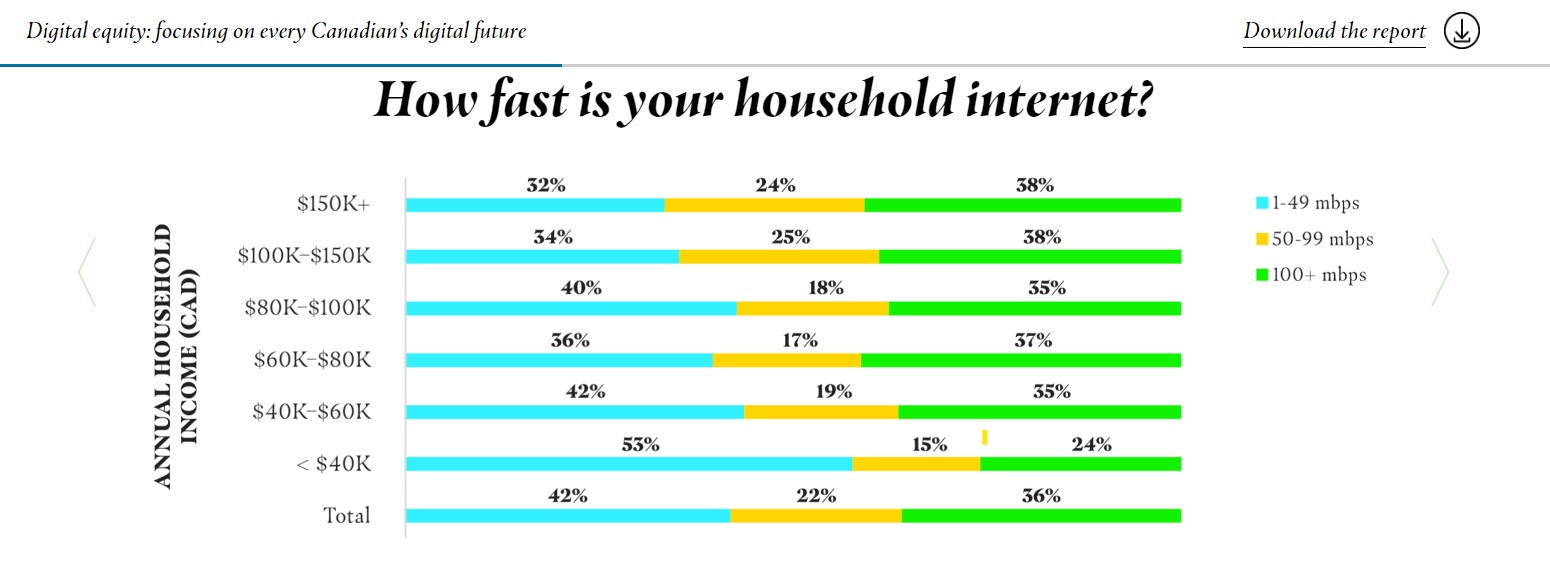Technology has provided society with access to some pretty amazing tools. Kennedy and Ummey’s opening statement presented several examples of this. They both did a great job describing the positive impacts technology can have on people’s ability to learn, raise awareness or funds for important causes, stand up for social justice issues, and connect with people from other places or cultures, just to name a few. I was impressed with the depth of their research; however, Graeme and Jeff’s argument as well as the articles and information shared for this week’s debate topic have convinced me to stick to the position that technology has not led to a more equitable society. If certain people are excluded from the benefits of technology due to socio-economic status, location, or race, then it is clear that not everyone is getting the same benefits from the technological tools that are available in today’s society.
In their posts this week, both Jeff and Will made reference to the concept of the Digital Mattew Effect which according to Neuman and Celano is “the tendency for early advantages to multiply over time” — which is to say that people who start off with more skilled exposure to technology will have an exponentially greater advantage over those with less exposure. This same article states that tech is actually “increasing the gap between rich and poor, between whites and minorities, and between the school-ready and the less-prepared.” In this Harvard Political Review article by Alyvia Bruce shared by Graeme and Jeff, the concern with technology is that students “are facing even more challenges as the technology gap widens. A student’s ability to have at-home learning resources is largely dependent on factors such as location, socioeconomic status, and race.”

Unfortunately, the Covid-19 pandemic and the forced shift to online learning highlighted this inequity within my own classroom and school. When students were sent home in March 2020, some students did not have the technology or internet access needed to participate fully in online classes. Even though teachers did their best to make sure school work was still accessible to all students, the impact of virtual learning affected some students in a more negative way than others. In her article, Bruce continues by advising that “it is important to recognize that certain groups of students have many more obstacles to overcome to be on equal footing with their peers.” When making the gradual return back to in-person learning, there was a noticeable disparity between the students who had access to online learning technology and those who did not. The inequity caused by access to technology was evident.
So, where do we go from here? Is there any way to close the gap? Bruce’s article states that increasing funding, expanding at-home technology access, and creating community partnerships are all needed along with full-scale education reform. With these changes feeling rather large-scale and out of reach, what can I do in my classroom (if anything) to bridge the gap? According to Abdullah Masmali, “ it is crucial that technology use starts from kindergarten through secondary education. This will help to address differences between students who have the ability to use technology and those who are unable to use it” which goes back to the idea presented earlier in my post. Helping students to learn the appropriate skills at school on the devices provided is a small step that can help with more equitable access to technology.